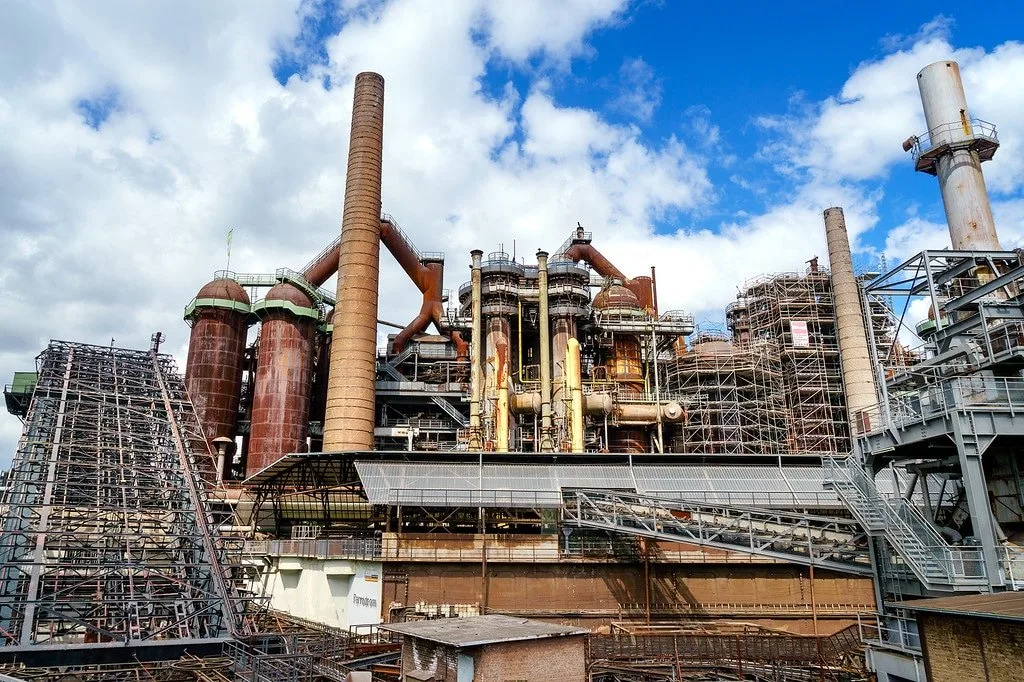
Abandoned Volklinger Ironworks
Saarbrücken, Germany
Do you know how steel is made? Volklinger Ironworks produced raw pig iron for over 100 years before it shut down in 1986. Now you can tour the old factory.
I really love abandoned buildings. There’s just something alluring about an old dilapidated structure slowly getting reclaimed by nature. A desolate and haunting kind of beauty composed of crumbling bricks, broken glass, and rusting iron.
I was in Germany for the Social Travel Summit, and decided to spend an additional few days traveling around the country. Specifically the state of Saarland along the border with France.
Arriving by train to the industrial town of Volklingen, I began exploring the last remaining 19th & 20th century ironworks facility in the world. Turns out this large & complicated smelting plant has an interesting history.
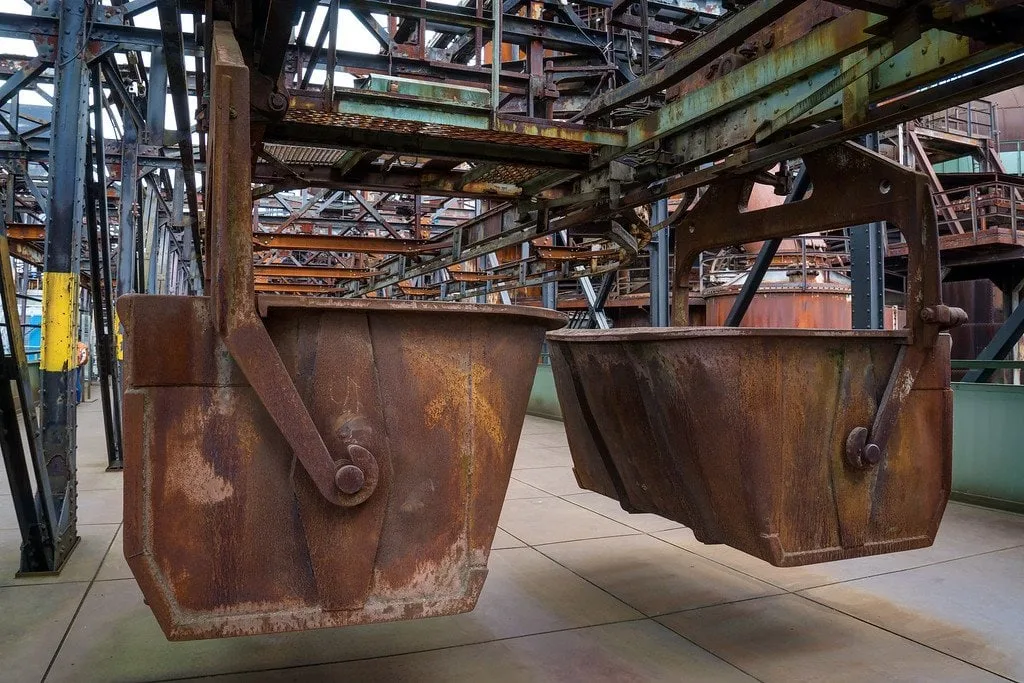
Suspended Buckets For Moving Iron Ore
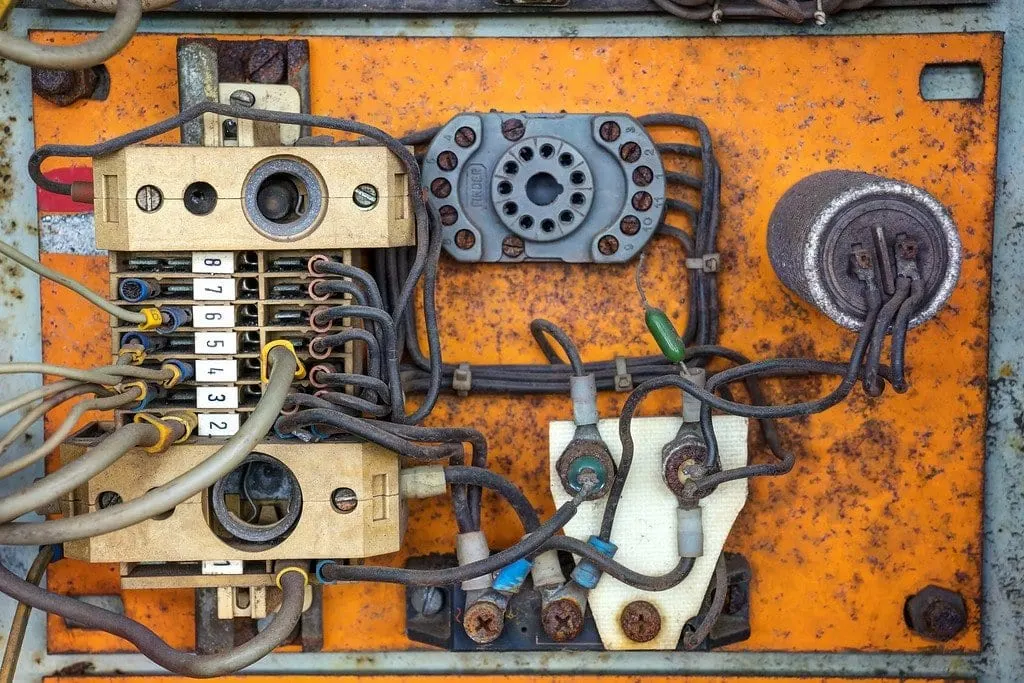
Rusty Electrical Panel
Volklinger Ironworks
Originally built in 1873 for steel production, the plant was soon converted into an iron-smelter for the production of liquid pig iron. Pig iron is the major ingredient used to create steel.
For over 100 years it produced molten iron that was shipped via rail car to steel mills where it was then forged into steel beams. It was the largest steel producer in the German empire.
During World War 2 Volklinger was one of the only factories that wasn’t bombed by the allies — which is odd because it was the largest & most productive. This has fueled many conspiracy theories over the years.
Like the fact that factory owner Carl Röchling was a Freemason, as was US President Franklin Roosevelt.
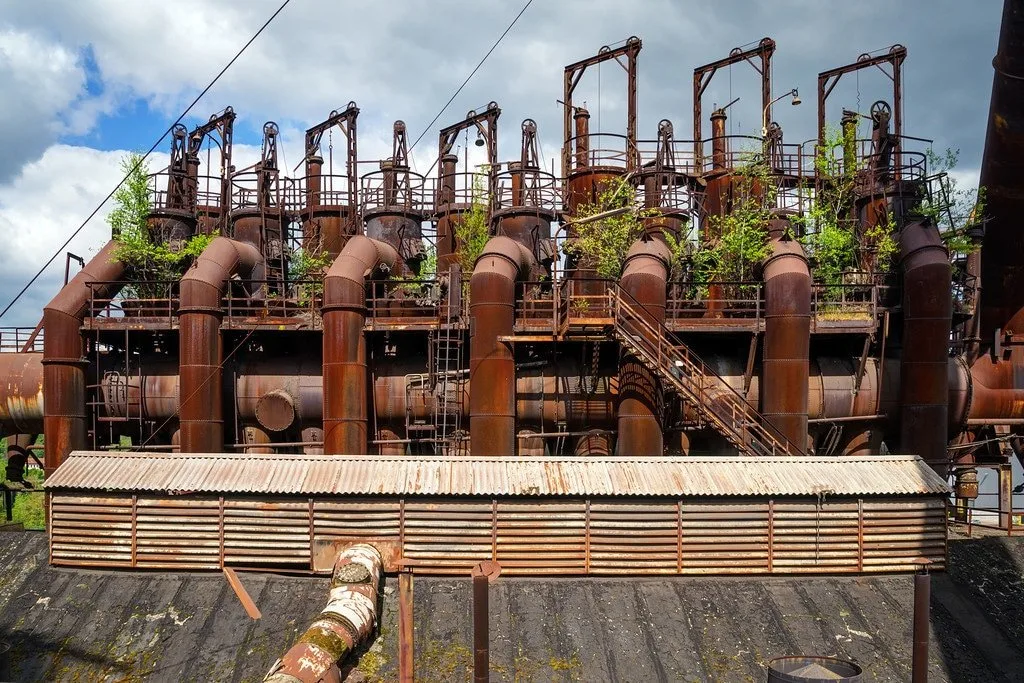
Nature Begins to Reclaim the Factory
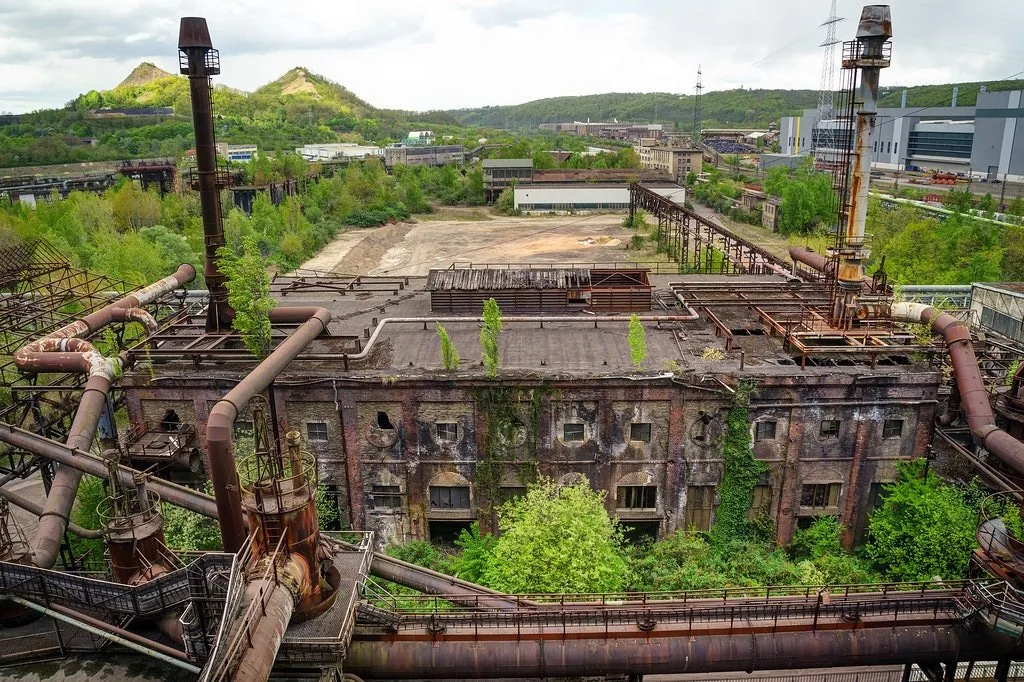
Man-Made Mountains of Slag in the Distance
How Steel Is Made
Steel is a metal alloy made from a mixture of iron and carbon. Too much carbon is bad though, as is too little. Raw iron ore mined from the Earth is the main ingredient, but it first needs to be concentrated before it can be used to create steel.
The blast furnaces at Volklinger Ironworks turned raw ore into pig iron using high heat, coke, and limestone to reduce oxygen and sulfur — producing a “slag” of impurities that floats to the top.
Then the pure molten iron can be drained out of the bottom of the furnace and loaded into special rail cars that take it to a nearby steel mill.
Excess carbon is burned off to make the correct mixture, and the hot metal is rolled into steel as we know it today.
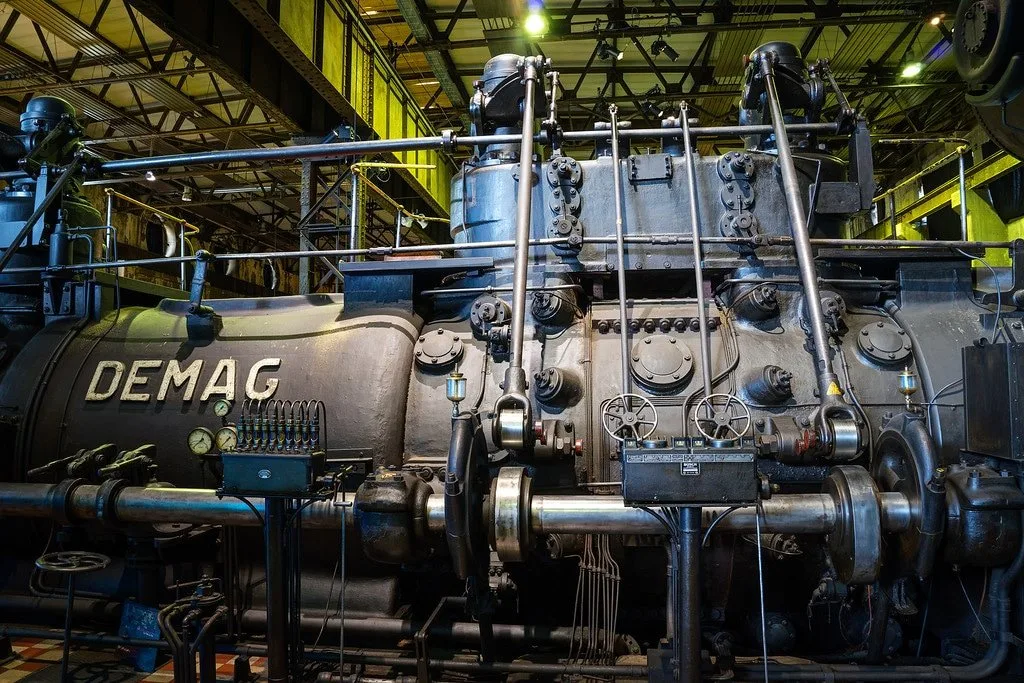
Huge Gas-Powered Engines Pump Hot Air Into the Furnace
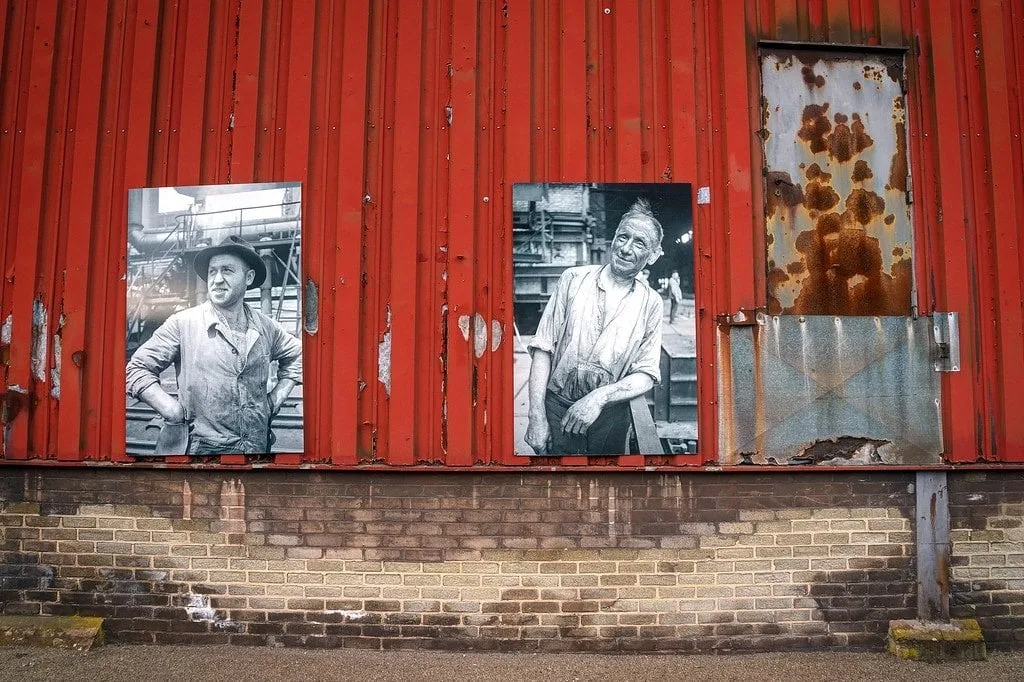
Portraits of Volklinger Workers
Unpleasant Factory Conditions
Life at an ironworks during the 20th century wasn’t easy. Extreme heat, exposure to the elements, backbreaking work, choking coal dust, dangerous machinery, and loud noise were just some of the unimaginable conditions employees had to endure on a daily basis.
At one point 17,000 people worked at the factory to keep production going 24 hours a day! The whole town of Volklinger sprung up just to support the iron smelter and its workers.
During the war prisoners were forced to work here producing steel for Hitler’s armies.
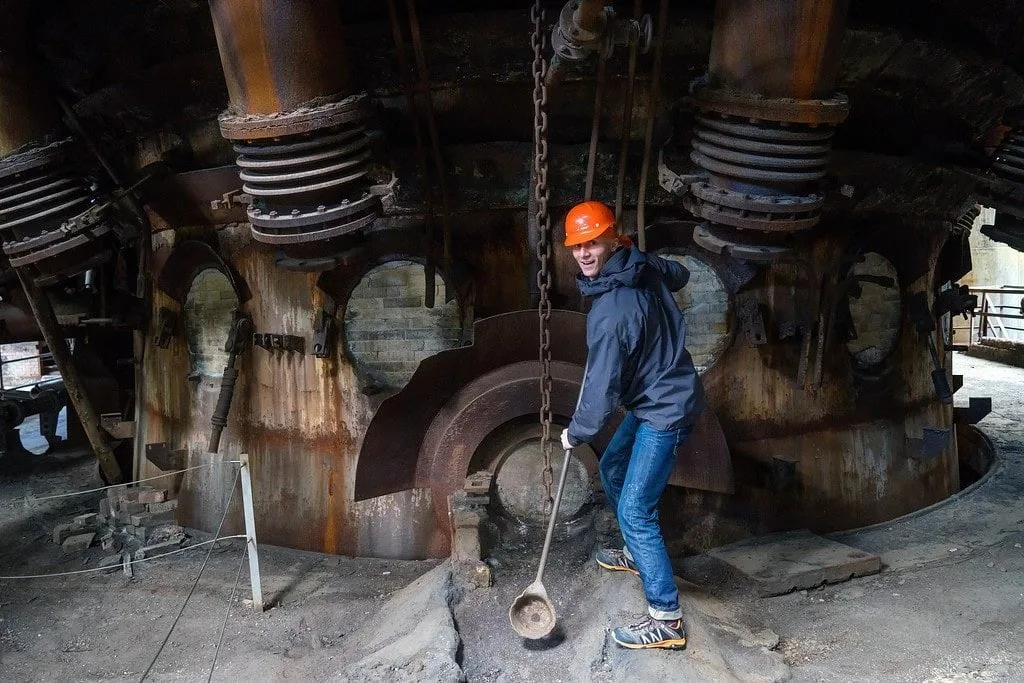
Molten Iron Flowed Out Here
UNESCO World Heritage Site
In 1994 Völklinger Hütte was designated a UNESCO World Heritage Site, allowing for safety improvements to the building and self-guided tours. Now anyone can visit and explore the rusting machinery, ancient gas-powered engines, towering blast-furnaces, and 40 meter high catwalks.
It was fascinating learning about the golden age of steel, and how it’s made. Arguably one of the most important products in the history of mankind.
[su_box title=”Travel Planning Resources For Saarbrücken, Germany” style=”noise” box_color=”#333333″ title_color=”#FFFFFF” radius=”3″ class=”resource-box”]
Location: Saarbrücken, Germany
Total Cost: €12 euros
Official Website: Völklinger Hüette
Getting There: Saarbrücken is the nearest town with accommodation options, from there you can take a short train ride to Völklinger.
Packing Guide
Check out my travel gear guide to help you start packing for your trip. Pick up a travel backpack, camera gear, and other useful travel accessories.
Book Your Flight
Find cheap flights on Skyscanner. This is my favorite search engine to find deals on airlines. Also make sure to read how I find the cheapest flights.
Rent A Car
Discover Cars is a great site for comparing car prices to find the best deal. They search both local & international rental companies.
Book Accommodation
Booking.com is my favorite hotel search engine. Or rent apartments from locals on Airbnb. Read more about how I book cheap hotels online.
Protect Your Trip
Don’t forget travel insurance! I’m a big fan of World Nomads for short-term trips. Protect yourself from possible injury & theft abroad. Read more about why you should always carry travel insurance.
Recommended Guidebook: Lonely Planet Germany
Suggested Reading: Germany: Unraveling An Enigma
[/su_box]
READ MORE TRAVEL TIPS
I hope you enjoyed my guide to visiting Germany’s abandoned Volklinger Ironworks! Hopefully you found it useful. Here are a few more wanderlust-inducing articles that I recommend you read next:
Do you enjoy exploring abandoned buildings like me? Join the conversation on Facebook, Instagram, or Twitter to share!
